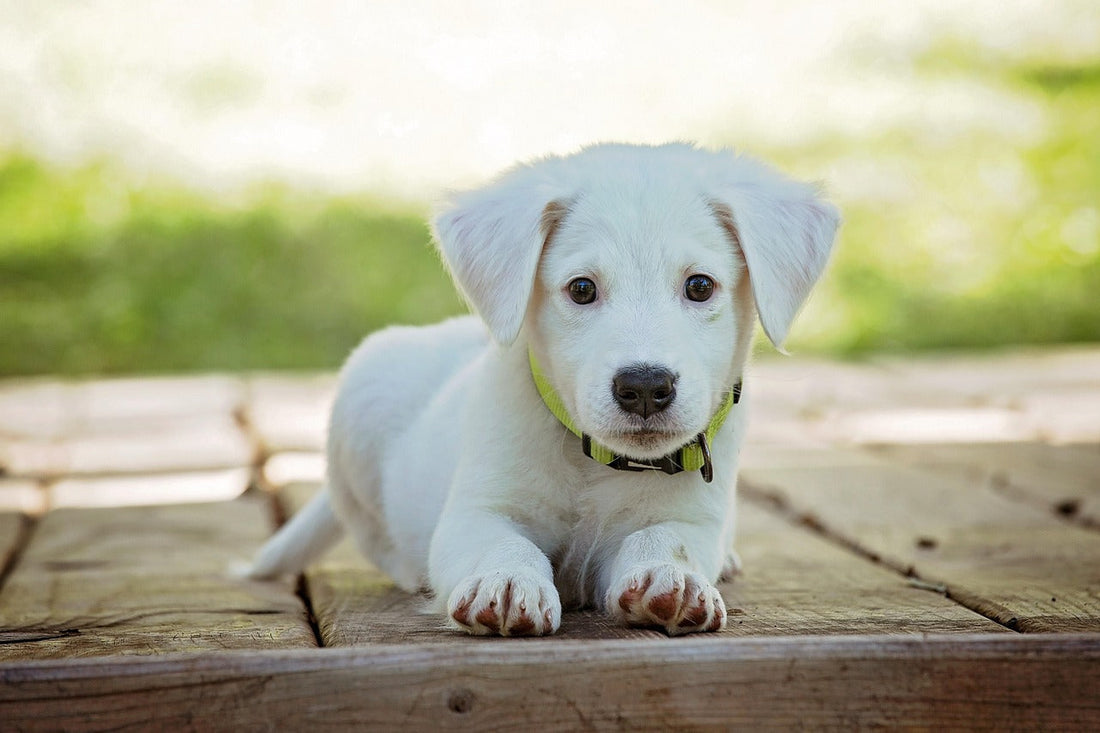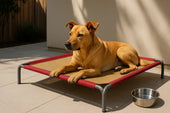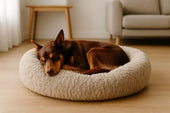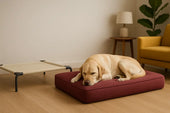Key Takeaways
- Understand Why Your Dog Won’t Use Its Bed: Dogs may avoid their beds due to discomfort, location, anxiety, medical conditions, or negative associations. Identifying the root cause is crucial for a lasting solution.
- Comfort and Environment: The right size, shape, material, and climate-appropriate features are key. Australian homes and seasons often play a big role in canine sleep preferences.
- Location Matters: Busy, drafty, or noisy spots can discourage your dog from settling in their bed. Placement is as important as the bed itself.
- Medical and Behavioural Causes: Pain, anxiety, and sudden changes in behaviour are red flags. Seek veterinary advice for unexplained sleep issues.
- Practical, Gentle Solutions: Positive reinforcement, gradual training, and the right products can help your dog love their bed again. Avoid punishment or force.
- Australian Insights: Local climate, pet care standards, and lifestyle play unique roles in your dog’s sleeping habits.
- When to Seek Help: Consult a vet or behaviourist if problems persist, worsen, or involve health changes.
- Proactive Prevention: Keep beds clean, introduce new sleep spaces thoughtfully, and adapt as your dog ages or as seasons change.
Introduction
A good night’s sleep is as important for our dogs as it is for us. But what happens when your beloved pet refuses to use their bed, choosing instead the couch, the cold floor, or even your bed? For many Australian pet owners, this behaviour is more than a minor inconvenience—it can signal deeper comfort, health, or behavioural issues.
Understanding why dogs avoid their beds isn’t just about convenience; it’s about ensuring your companion’s wellbeing. This guide explores the real reasons behind canine bed avoidance, from comfort and environment to medical and emotional causes. It delivers proven solutions, actionable advice, and real Australian stories to help your dog get the restful sleep they deserve.
Whether you’re dealing with a new puppy, an anxious rescue, or an older dog with changing needs, this article provides everything you need to create a safe, appealing sleep space for your pet.
Understanding Canine Sleep Preferences
How Dogs Choose Where to Sleep
Dogs are creatures of habit but also have individual preferences. “The spot a dog chooses to sleep is a complex blend of instinct, comfort, and learned behaviour,” notes Dr. Katrina Warren, a renowned Australian veterinarian and pet expert (source).
Factors that influence a dog’s sleep spot include:
- Instinctive Behaviours: Many dogs retain ancestral instincts, seeking places that feel safe, secure, and offer a vantage point.
- Comfort and Support: Just like humans, dogs look for spots that support their bodies and cushion their joints.
- Temperature Regulation: Dogs may move between locations to find a spot that’s not too hot or too cold, especially relevant in Australia’s varied climates.
- Social Preferences: Some dogs want to be near their people, while others seek solitude.
Breed-Specific Tendencies and Age
Certain breeds are more likely to curl up in tight spaces (think Terriers and Dachshunds), while large breeds or older dogs often need more cushioning for their joints. Puppies and seniors are also more sensitive to temperature and comfort.
Health and Environmental Influences
Health issues—like arthritis or allergies—can drive bed avoidance. Environmental factors, such as drafts, noise, or proximity to family activity, also play a role.
“Observe your dog’s behaviour closely. Where do they nap during the day? What locations do they avoid? Their choices tell you a lot,” recommends the RSPCA Australia.
Common Reasons Your Dog Won’t Sleep in Its Bed
Understanding the underlying reasons is the first step to finding a solution. Here are the most common causes, supported by expert advice and real owner experiences.
1. Comfort and Suitability of the Bed
Size, Shape, and Material
A bed that’s too small, too big, too hard, or made of unappealing fabric can turn your dog away. Some dogs like to sprawl, while others curl up tightly. Puppies may prefer softer, nest-style beds, while senior dogs often need orthopedic support.
Allergies or Sensitivities
Synthetic fabrics, strong smells from new beds, or detergent residues can cause allergic reactions, making the bed uncomfortable.
Temperature and Climate
Australia’s climate varies widely—from chilly southern winters to hot, humid northern summers. Beds that trap heat may be avoided in summer, while thin mats may not offer enough warmth in winter.
- Tip: Consider seasonal bedding changes, such as cooling mats for summer and plush beds for winter.
2. Location, Noise, and Household Dynamics
Bed Placement
Beds placed in noisy, busy, or drafty areas can be off-putting. Dogs, like people, prefer a quiet, safe space for sleep.
Household Activity
High-traffic zones, proximity to doors, or being too far from the family can influence your dog’s bed choice.
Changes in Environment
Moving house, adding a new pet, or even rearranging furniture can trigger anxiety or confusion, leading to bed avoidance.
According to PetMD, “Dogs thrive on routine and predictability. Sudden changes can disrupt their sleep and behaviour.”
3. Medical and Behavioural Issues
Underlying Health Conditions
Pain, joint issues, skin irritations, or other medical concerns may make a bed uncomfortable. Senior dogs, in particular, can develop arthritis or hip dysplasia, making hard beds painful.
Anxiety, Stress, and Behavioural Disorders
Separation anxiety, fear, or past trauma can drive avoidance. Dogs that are punished in or near their bed may develop negative associations.
Age-Related Changes
Older dogs may have changing sleep patterns or new sensitivities.
- If your dog’s sleep habits change suddenly or they seem uncomfortable, consult your vet. The Australian Veterinary Association is an excellent resource for finding a professional near you.
4. Unwanted Associations or Past Experiences
Previous Negative Experiences
If your dog was ever scolded, punished, or frightened in their bed, they might associate it with negative feelings.
Inadequate Training or Introduction
Simply placing a bed and expecting immediate use often fails. Dogs need gradual introduction, positive associations, and sometimes even your scent to feel comfortable.
Changes in the Family or Home
New pets, babies, or guests can disrupt your dog’s sense of safety, leading them to seek new sleep spots.
Solutions: How to Encourage Your Dog to Sleep in Its Bed
1. Choosing the Right Bed
Bed Types and Features
- Orthopedic Beds: Ideal for senior dogs or breeds prone to joint issues.
- Cooling Beds or Mats: Useful in Australian summers or for thick-coated breeds.
- Calming/Donut Beds: Best for anxious dogs or those who love to nest.
- Raised Beds: Provide airflow and support, suitable for outdoor or hot environments.
Find beds with removable, washable covers and hypoallergenic materials. See a range of options at PetCareShed – Dog Beds & Mats.
Sizing and Placement Tips
- Measure your dog from nose to base of tail for length.
- Choose a bed that matches your dog’s preferred sleeping position (curled or stretched).
- Check that the bed fits in the planned location without crowding or exposure to drafts.
“The right bed can transform your dog’s sleep—and your nights,” says Dr. Melissa Meehan, veterinarian and animal behaviourist (source).
2. Ideal Bed Placement
Quiet, Secure Spots
Choose a low-traffic area away from doors, noisy appliances, or direct sunlight (unless your dog seeks warmth).
Proximity to the Family
Some dogs feel safest close to their humans. If your dog seems anxious, try placing their bed near your own for a sense of security.
Rotating Sleep Spots
Observe your dog’s habits. If they gravitate to a certain spot during the day, try placing their bed there.
Real Owner Example
Sarah from Brisbane shares: “Our kelpie wouldn’t touch his bed in the laundry but sleeps soundly when it’s in the lounge next to our sofa. Turns out, he just wanted to be part of the action!”
3. Positive Reinforcement and Training
Gradual Introduction
Let your dog explore the new bed at their own pace. Encourage with treats, gentle praise, and petting.
Use of Comfort Items
Place a favourite blanket, toy, or an item with your scent in the bed.
Training Steps
- Invite your dog to the bed with a command (“Bed!” or “Go to bed!”).
- Reward when your dog sniffs, steps onto, or settles in the bed.
- Repeat daily, gradually increasing the time your dog spends on the bed.
Avoid scolding or forcing your dog onto the bed, which can build negative associations.
For training tips, see Dr. Katrina Warren’s advice.
4. Addressing Anxiety, Medical, or Behavioural Concerns
When to Consult a Vet
If your dog’s sleep issues are sudden, severe, or accompanied by other symptoms (limping, licking, vocalising, restlessness), book a veterinary check-up. Some conditions may require pain management, allergy treatment, or behaviour therapy.
Reducing Anxiety
Consider calming aids (pheromone sprays, anxiety wraps), daily exercise, and consistent routines.
Behavioural Support
If needed, consult a certified animal behaviourist. The Australian Veterinary Association’s resources can connect you with local professionals.
Vet-Approved Tips for Better Dog Sleep
- Establish a Routine: Set regular sleep, meal, and play times to give your dog security.
- Provide Enough Daytime Exercise: Physical and mental stimulation during the day leads to better rest at night.
- Create a Calm Bedtime Atmosphere: Dim lights, reduce noise, and avoid exciting activities before bed.
- Address Underlying Medical Issues: Stay on top of check-ups, especially for seniors or dogs with chronic health conditions.
- Monitor Your Dog’s Comfort: Adjust bedding and location as seasons or your dog’s needs change.
Dr. Joanna Paul, an Australian veterinarian, suggests: “Patience is key. Changing sleep habits can take time, especially for anxious or older dogs. Always use gentle encouragement and seek professional help if you’re worried.”
Product Recommendations for Better Dog Sleep
Note: Mention only product types, not specific brands, to align with your store’s offerings.
Bed Types
- Orthopedic and memory foam beds for joint health
- Calming or nest beds for anxious dogs
- Raised beds for airflow in hot weather
- Waterproof beds for easy cleaning
- Travel or portable beds for consistency when away from home
Accessories
- Machine-washable blankets for comfort and warmth
- Calming sprays or diffusers with dog-appeasing pheromones
- Soft, safe toys for added reassurance
Cleaning and Care
- Regular washing of bedding with pet-safe, fragrance-free detergents
- Vacuuming the area to control dust and allergens
- Seasonal rotation of bedding for comfort
For examples and options, visit PetCareShed – Dog Beds & Mats.
When to Seek Professional Help
Recognising when your dog’s sleep problem is more than a preference is crucial. Seek advice if:
- The behaviour is sudden and persistent.
- Your dog shows signs of pain, distress, or anxiety.
- Sleep avoidance is paired with other symptoms (weight loss, appetite changes, excessive licking, aggression, or hiding).
- Training and environmental changes do not work.
A veterinarian or certified behaviourist will assess your dog’s overall health and suggest a tailored action plan.
Preventing Future Bed Avoidance
Introducing New Beds
- Let your dog investigate new beds at their own pace.
- Rub your hands or a favourite toy on the bed to transfer familiar scents.
- Place the bed in a familiar, trusted area.
Maintaining Cleanliness and Freshness
- Wash bedding regularly.
- Air beds out in sunlight to remove odours and allergens.
- Replace beds that are worn, flat, or torn.
Adapting as Your Dog Ages or Seasons Change
- Switch to orthopedic beds as your dog gets older.
- Use cooling mats or lightweight beds in summer.
- Add extra blankets or raised beds in winter.
Involving Your Dog in the Process
Observe your dog’s natural sleep choices. Involve them by moving their bed to favourite nap spots and watching how they react.
Real Australian Pet Owner Stories
Case Study 1: Archie the Senior Beagle (Melbourne)
Archie began avoiding his bed at age 10. His owners noticed he struggled with stairs and getting comfortable. After a vet visit confirmed early arthritis, they switched to an orthopedic bed, placed in a warm corner of the living room. With gentle encouragement and the use of calming treats, Archie now sleeps soundly in his bed every night.
Case Study 2: Ruby the Rescue Kelpie (Sydney)
Ruby, a rescue dog, refused her bed and hid under tables. With advice from a local behaviourist, her owners introduced a calming bed, added a blanket with their scent, and rewarded Ruby for every small step toward the bed. Over time, Ruby gained confidence and now prefers her bed over the couch.
Case Study 3: Bella the Cavoodle (Brisbane)
Bella always wanted to sleep in her family’s bed. Her owners decided to compromise by placing Bella’s bed next to theirs, gradually moving it further away as she got used to sleeping alone. Now, Bella is content with her own sleeping space, but still close to her family.
Frequently Asked Questions
Why does my dog prefer the floor or couch over its bed?
The floor may be cooler or more comfortable, especially in summer. The couch may carry your scent, feel more secure, or simply be a habit.
Should I allow my dog to sleep in my bed instead?
This is a personal decision. There’s no harm as long as everyone is comfortable, and your dog has no behavioural issues. Some owners set boundaries for hygiene or personal preference.
How long does it take to train a dog to use its bed?
It varies. Some dogs adjust in days, others need weeks of gentle encouragement, especially if they’re anxious or have past trauma.
Are certain breeds more likely to avoid dog beds?
Breeds with thick coats (e.g., Huskies) may avoid soft, warm beds in hot weather. Smaller breeds often prefer enclosed, nest-style beds.
What if my dog suddenly stops using its bed?
Check for changes in health, environment, or the bed itself. Sudden avoidance can signal discomfort, pain, or anxiety.
Can puppies and seniors be trained to use a bed?
Absolutely. Start young for puppies with positive reinforcement. For seniors, ensure beds are accessible and supportive.
Final Thoughts
Helping your dog love their bed is a process built on understanding, patience, and gentle encouragement. Every dog is unique—what works for one may not work for another. Stay attuned to your pet’s needs, adjust as you learn, and don’t hesitate to seek expert help if sleep issues persist.
Remember, a comfortable, well-rested dog is a happier, healthier companion. By following these vet-approved tips and solutions—tailored for Australian homes and climates—you’ll set your furry friend up for restful nights and bright mornings ahead.














